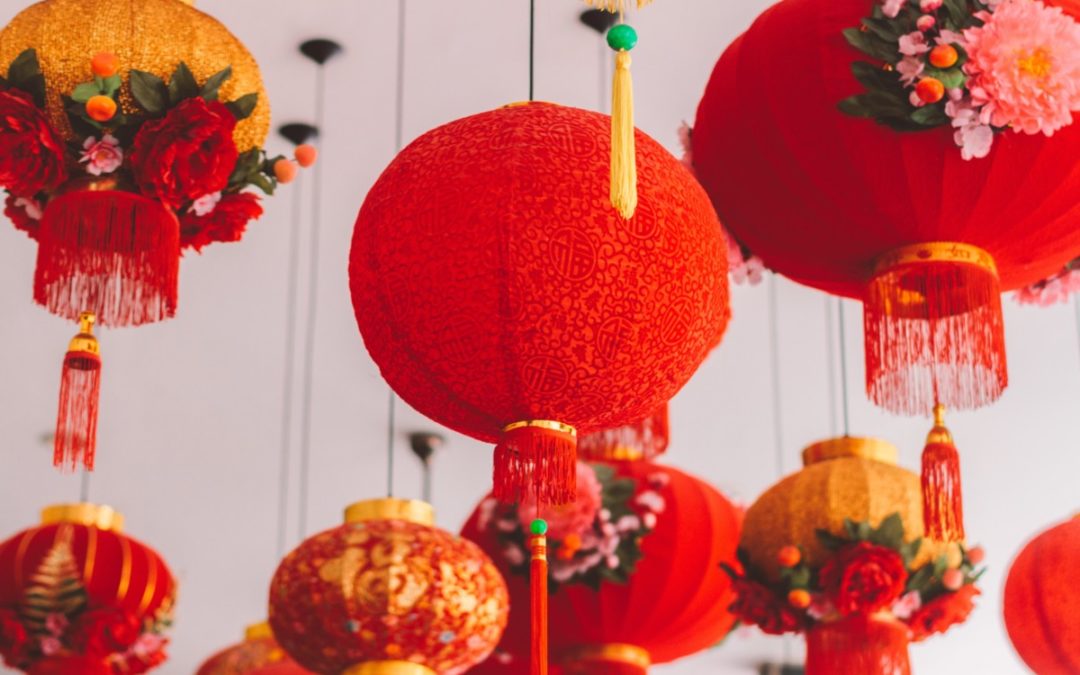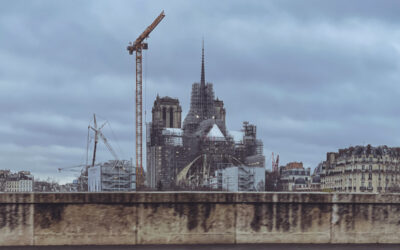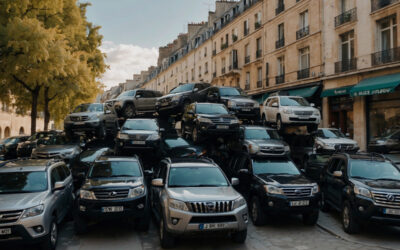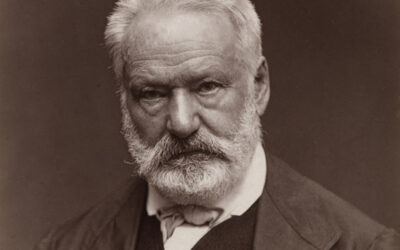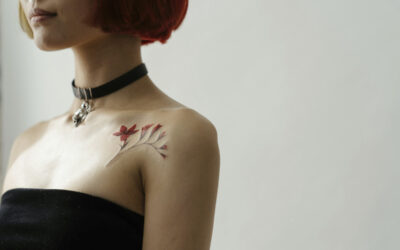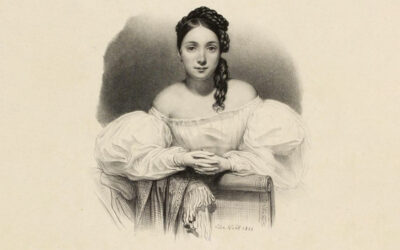To understand everything about Chinese New Year, we opened the door of the wonderful Le Phénix bookstore, dedicated to Chinese culture on 150m2 where we met Mélodie Landrot, manager of the place. Or this ? In Haut-Marais, on the outskirts of the oldest Chinese quarter in Paris and France!
What is Chinese New Year?
Mélodie Landrot: Chinese New Year, or Spring Festival (in Chinese: chunjie 春节) is the most important festival in China. It is equivalent to Christmas in the West. The date varies between January 20 and February 20.
It is a celebration during which all families come together. At this time, China was the scene of a very large wave of migration, with millions of people taking the train or plane to return to their city or village of origin.
Traditionally, the festivities last a month: two weeks of preparation before the New Year and two weeks of festivities which end with the Lantern Festival.
All Chinese in France celebrate the New Year. It is an important moment for transmitting Chinese traditions and values to new generations who were born or raised in France.
Why does Chinese New Year fall on a different date than in the West?
Because it is based on the lunar calendar. The solar calendar was adopted in China late, in order to adapt to the Western calendar.
New Year's Day is a new moon day. The new year begins with a moonless night. And the festivities end two weeks later, on a full moon evening. It's the Lantern Festival.
What does the Year of the Rat bring?
The rat is the first animal in the Chinese zodiac cycle, so it is a sign of renewal. The Chinese zodiac is made up of twelve and sixty year cycles. Traditionally, in China, the rat is a symbol of prosperity because it has numerous offspring. Also, its presence in homes once meant that the attics were full.
What are the links between the Chinese community in Marais and your bookstore?
Our bookstore has existed since 1965 and its location was chosen at the time to be close to the Chinese community in the 3rd arrondissement.
Today, the majority of this community originates from the Wenzhou region of Zhejiang, south of Shanghai. They are often traders who work in the field of imports, closely linked to their region of origin where many manufacturing factories are located. This population is different from the historical migrants of the 13th arrondissement, who are often Chinese from Indochina who arrived in France following the conflicts and civil wars of the 1970s.
Where is the heart of the “Chinatown” of the 3rd arrondissement?
At the level of Arts et Métiers, in particular in the little rue au Maire, where caterers, restaurants, supermarkets, pastry shops, butchers, hairdressers and other shops are concentrated for the residents of the neighborhood. There you can taste specialties from many regions of China. And you can buy products there that are difficult to find in French shops.
In the 1980s and 1990s, many Chinese people from the neighborhood regularly came to the bookstore to consult and buy the press and works in the original language. The new generations get their information or read mainly on smartphones, they visit our bookstore less.
However, many families whose children were born in France and take Chinese classes come to buy textbooks or books to help their offspring.
Reading advice to better understand Chinese culture?
Regarding Chinese culture, there are two that come to mind:
• China, culture and tradition, by Jacques Pimpaneau (Ed. Philippe Picquier, 2015, 535 p. €11)
• The flexibility of the dragon: The fundamentals of Chinese culture, by Cyrille Javary (Albin Michel, 2014, 308 p., €9.50)
For young people, especially on New Year's Eve, I advise:
• The rat told me, by Marie Sellier, Catherine Louis and Wang Fei (Ed. Philippe Picquier, 2017, 20 p., €6.50)
• Nian the Terrible : The legend of the Chinese New Year, by He Zhihong and Guillaume Olive (Seuil, 2012, 32 p. €14.20)
• Nian Shou, the Chinese New Year monster, by Véronique Massenot and Sébastien Chebret (Elan Vert, 2018, 24 p. €12.20)
• Uncle's lantern, Wang Yage, ZHU Chengliang (Hongfei Cultures, 2019, 38 p., €14.90)
• Reunited, by YU Liqiong, ZHU Chengliang and YU Liqiong (Hongfei Cultures, 2015, 35 p., €14.50)
• Tales from China: The origin of the great festivals, HE Zhihong, OLIVE Guillaume (Seuil, 2014, 54 p. €18)
Phoenix Bookstore
72 Boulevard de Sébastopol, 75003 Paris
Monday to Saturday 10 am to 19 pm
Close on Sunday
Bookstore website
Chinese New Year festivities begin on Sunday!
On the program are exhibitions, conferences, lion dances…
SUNDAY JANUARY 26
• 14 p.m.: Meet at Place de la République for the famous Dragon parade. With free face painting for children from 10 a.m. to 12 p.m. at the headquarters of the Pierre Ducerf association 29, rue Michel Le Comte 75003 Paris.
China will be in the spotlight again:
From FEBRUARY 3 to 8
Exhibition of works by students from the Beijing and Guanzhou Art Center.
TUESDAY 4 FEBRUARY
• 19 p.m.: In partnership with Chinese LGBT Week, conference by Yu Zhou, Qing and Zhang Yi on humor in China: the different forms of comic art, can we laugh at everything in China?
WEDNESDAY 5 FEBRUARY (program dedicated to children)
• 12 p.m.: Folk dance lessons by the France Chine Culture association
• 13 p.m.: Yoga class
• 14 p.m.: Paper cutting workshop
• 15 p.m.-16:30 p.m.: Reading stories and making a dragon puppet at the Marguerite Audoux library (from 7 years old by reservation at 01 44 78 55 20)
• 17 p.m.: Children’s musical show by the association of little trilinguals
THURSDAY FEBRUARY 6
• 19 p.m.: Evening of greetings to the Chinese community which will begin with the Lion dance in the main courtyard of the town hall followed by a show of traditional dances in the village hall by the association of Chinese residents in France and the association for Artistic Exchanges between France and China.
FRIDAY FEBRUARY 7
• 19 p.m.: Piano concert by the France Chine Culture association
SATURDAY FEBRUARY 8
• 9 a.m.-13 p.m.: Sports workshops for children/teenagers: Gongfu, martial arts, hip-hop, Kpop.
Intergenerational cultural workshops: Chinese calligraphy and painting, Chinese language
All these activities take place at the Town Hall of the 3rd except for the stories on Wednesday February 5 which will take place at the Marguerite Audoux library.
*source: What to do in Paris
NEWS, IT'S THIS WAY
Notre-Dame: dismantling of the scaffolding has begun
The gigantic repair project at Notre-Dame de Paris cathedral is coming to an end. The dismantling of the spire scaffolding has begun. It is visible again with, at its top, a rooster which sits in majesty. In ten months, visitors will be able to return to the places whose reopening is planned...
Vote on SUVs: The results in Paris-Centre
Paris voted against SUVs. But only 6% of residents went to the polls. Of the 1 Parisians registered, 374 took part in the ballot. With 532% of votes in favor, the majority expressed their desire to tax these behemoths of the Parisian streets.
For or against SUVs vote on February 4, 2024
In the debate on traffic in Paris, the question of SUVs gives rise to lively discussions. Some advocate a ban because of their environmental impact and their congestion in the city.
NOW ON THE MOOD MARSH
Victor Hugo, the writer with a thousand talents
Born in 1802, Victor Hugo became a social writer, a playwright, a poet, a novelist and a romantic designer. Nicknamed the man-ocean then the man-century, he is a political figure and a committed intellectual. He found success with Notre-Dame-de-Paris in 1831 and with Les Misérables in 1862.
The best tattoo parlors in Marais
Tattooing, an age-old practice, has long been the prerogative of convicts, dock workers, the underworld and sailors. Although it has become democratized, now affecting all profiles and concerning one in five French people, including 16% women compared to 10% men, it still remains taboo due to its definitive and transgressive nature.
Juliette Drouet actress, muse and mistress of Victor Hugo
At 14 rue Sainte-Anastase, from 1836 to 45 and at 12 from 1845 to 48, a few hundred meters from Place des Vosges, lived the muse and lover of Victor Hugo, Juliette Drouet née Julienne Gauvain.

